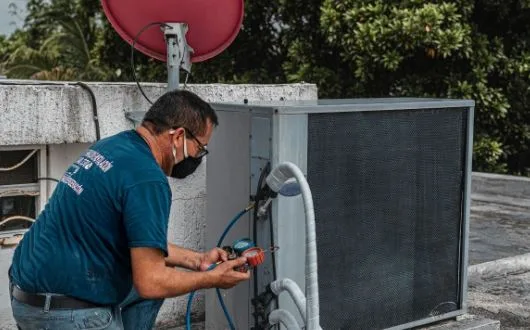The Crash Danger of Georgia State Patrol Pursuits
Between 2017 and 2022, police pursuits across the United States resulted in 3,336 fatalities. During this period, Georgia ranked third nationwide for deaths caused by police pursuits, recording 243 fatalities. The state also ranked first for fatalities tied to a single state patrol agency, with Georgia State Patrol responsible for 43 pursuit-related deaths.
A newly published study evaluates these outcomes in detail, focusing on Georgia-specific data and the public safety consequences of current pursuit practices. The findings highlight how frequently pursuits escalate into serious crashes and the disproportionate risks posed to passengers, bystanders, and individuals not directly involved in the initial incident.
Rising National Trends in Pursuit Fatalities
Spring and summer months consistently account for the highest number of police pursuits nationwide. In 2020, pursuits caused 697 deaths, the most of any year within the study period. March 18, 2021, was the deadliest single day, recording ten fatalities.
The states with the most pursuit fatalities were Texas (414), California (367), Georgia (243), Missouri (127), and Florida (124). County- and city-level data show that certain regions experience significantly higher numbers of pursuit deaths, reflecting differences in pursuit policies and enforcement culture.
Who Is Most Affected: Gender, Race, and Age
National data shows that men account for the majority of pursuit-related deaths, with 2,543 fatalities compared to 746 women. Race data indicates that 1,243 White individuals were killed, followed closely by 1,027 Black individuals. White Latino victims accounted for 393 deaths, Latino individuals for 124, and 358 cases were listed as “Unknown.”
Age demographics further emphasize risk among young adults. People aged 25–34 made up the largest group of pursuit fatalities (929), followed by ages 18–24 (800), 35–44 (550), and minors aged 0–17 (342).
Why Pursuits Are Initiated — and Why Fatalities Rise
More than 1,000 innocent people were killed during police pursuits between 2017 and 2022. This includes 551 bystanders and 548 passengers, exceeding the 920 fleeing drivers who died during the same period. The data suggests that pursuit tactics often create greater risks for uninvolved parties than for suspects.
Nationally, pursuits leading to fatalities were most commonly initiated for:
- Traffic stops: 949 deaths
- Suspected nonviolent crime: 574 deaths
- Suspected violent crime: 284 deaths
- Minor incidents or no suspected crime: 39 deaths
Traffic-stop pursuits include some serious offenses, such as driving under the influence, but also minor issues like speeding or equipment violations. Pursuing drivers under these circumstances can escalate low-level infractions into deadly encounters.
Georgia’s data reflects similar trends.
Agencies With the Most Pursuit Fatalities
Among all U.S. law enforcement agencies listed in the study, Georgia State Patrol recorded the highest number of pursuit-related deaths (43). Other agencies with high totals included the California Highway Patrol (40), U.S. Border Patrol (32), Houston Police Department (27), Chicago Police Department (22), Kansas City Police Department (19), and Texas Department of Public Safety (19).
Georgia’s Fatality Patterns
Between 2017 and 2022, Georgia recorded 243 pursuit-related fatalities. The year-by-year totals were:
- 2017: 34
- 2018: 39
- 2019: 32
- 2020: 67
- 2021: 49
- 2022: 22
The deadliest single incident occurred on September 27, 2019, when five people were killed after a pursuit initiated during a traffic stop. Two elderly women died after their vehicles were struck by the fleeing driver. Three occupants of the pursued vehicle were also killed. The driver had outstanding warrants for minor offenses outside Georgia.
Counties with the most fatalities:
- Fulton: 37
- Chatham: 14
- Clayton: 10
- Whitfield: 8
- Dekalb: 8
Cities with the most fatalities:
- Atlanta: 24
- Savannah: 6
- Midway: 5
- Jackson: 5
- Tunnel Hill: 5
Georgia’s demographic patterns reflect national trends in age and gender. However, the racial distribution is notably different. Black individuals account for 139 deaths, more than double the 66 White individuals killed. Georgia also recorded far more passenger and bystander deaths (80) than deaths among fleeing drivers (55).
Pursuit Policy and Public Safety
The study indicates that Georgia’s elevated fatality numbers may be connected to Georgia State Patrol’s pursuit policy. Unlike 42 other states, Georgia allows troopers to initiate pursuits without supervisor approval. This can lead to discretionary decisions to chase drivers for low-level infractions, increasing public risk.
Additional state data shows:
- 87% of Georgia State Patrol pursuits in 2023 were initiated for non-felony violations
- Between 2019 and 2023, there were 6,760 pursuits
- More than half (3,428) ended in crashes
- 1,917 people were injured
- 63 people were killed
- Only 14 days in 2023 had no police chase reported
Georgia State Patrol leadership maintains that its policy is “proportionally responsive” to roadway crime. However, critics argue that many pursuits display a lack of proportionality and insufficient consideration for public safety. Some advocates recommend adopting standards similar to the Atlanta Police Department, which authorizes pursuits only for forcible felonies or imminent threats.
Legal Support
Individuals injured in pursuit-related collisions may face long-term consequences and complex legal questions around liability. At Jones & Swanson, attorneys bring over 45 years of combined experience handling serious injury cases and navigating the legal challenges associated with high-speed pursuits.






